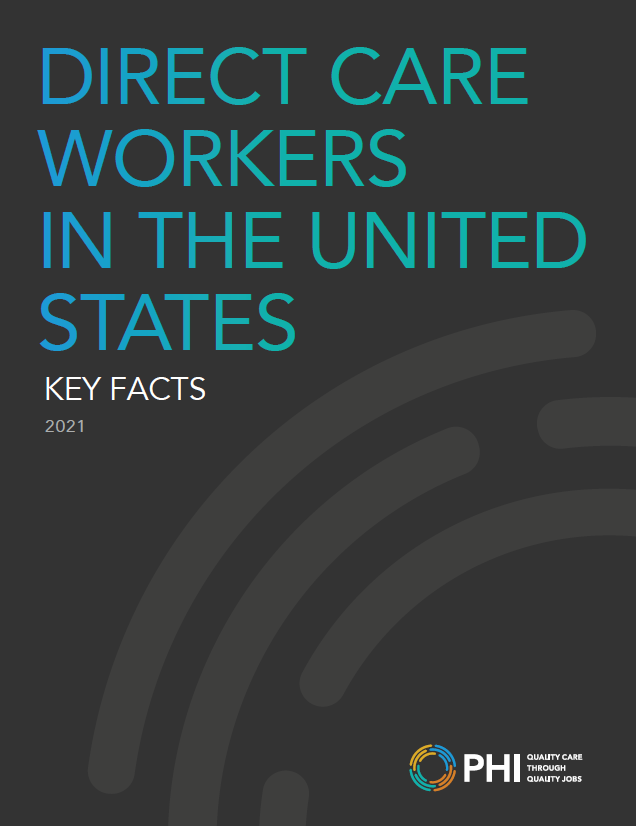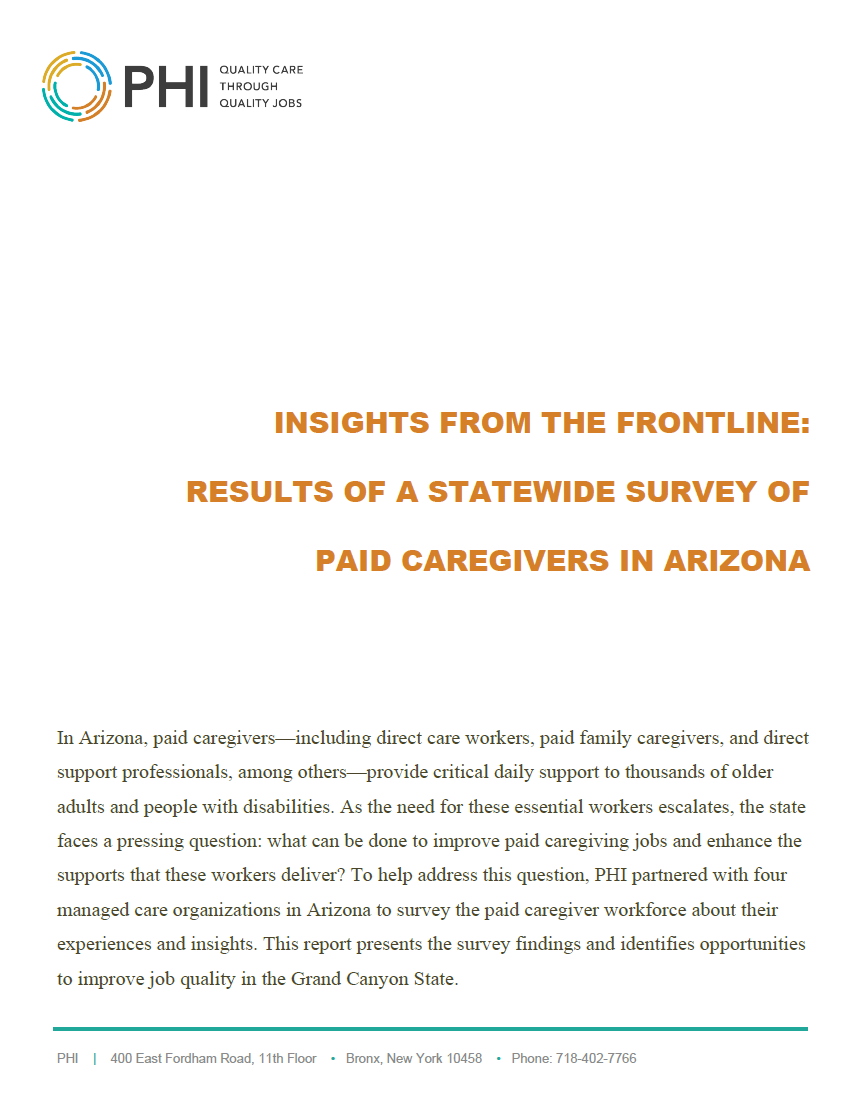Mississippi
Direct Care Workforce State Index Ranking
Mississippi
Key State Characteristics
Direct Care Workforce State Index Ranking
Mississippi
Worker Supportive Policies Index
Direct Care Workforce Policies
State policies that improve direct care worker compensation, training, and access to employment (via matching service registries).
-
Score Year Compare
-
Personal Care Aide Training Standards Key Provisions 6/10 2024
Notes:
FAQ & MethodologyNote: The key provisions used in this indicator include training regulation characteristics and the consistency of training requirements across payers and programs. For the full list of personal care aide training provisions, see the methodological notes.
Suggested Citation: PHI. Direct Care Workforce State Index. Last modified 07/30/2024. https://www.phinational.org/state-index-tool/
-
Home Health Aide Training Standards Exceed Federal Minimum No 2016
Notes:
FAQ & MethodologyNote: Federal regulations require home health aides employed by Medicare or Medicaid-certified home health agencies to complete 75 hours of training and 12 hours of continuing education, but states can set their own higher standards.
Suggested Citation: PHI. Direct Care Workforce State Index. Last modified 07/30/2024. https://www.phinational.org/state-index-tool/
-
Nursing Assistant Training Standards Exceed Federal Minimum No 2016
Notes:
FAQ & MethodologyNote: Federal regulations require nursing assistants employed by Medicaid or Medicare-certified nursing homes to complete 75 hours of training and 12 hours of continuing education, but states can set their own higher standards.
Suggested Citation: PHI. Direct Care Workforce State Index. Last modified 07/30/2024. https://www.phinational.org/state-index-tool/
-
Dollar-Amount Wage-Pass Through Policy (Current) No 2024
Notes:
FAQ & MethodologyNote: A dollar-amount wage pass-through is defined as a state policy that requires Medicaid-funded employers in long-term care to pay direct care workers a specified base wage or increase direct care worker wages by a specified dollar amount. This indicator includes current (not past) pass-throughs only.
Suggested Citation: PHI. Direct Care Workforce State Index. Last modified 07/30/2024. https://www.phinational.org/state-index-tool/
-
Percentage Wage-Pass Through Policy (Current) No 2024
Notes:
FAQ & MethodologyNote: A percentage wage pass-through is defined as a state policy that requires employers in long-term care to spend a specified proportion of Medicaid reimbursements on direct care worker wages and/or other compensation. This indicator includes current (not past) pass-throughs only.
Suggested Citation: PHI. Direct Care Workforce State Index. Last modified 07/30/2024. https://www.phinational.org/state-index-tool/
-
State-Funded Matching Service Registry No 2024
Notes:
FAQ & MethodologyNote: Matching service registries are online platforms that facilitate matching between self-directing home care consumers (and other employers, in some cases) and direct care workers. This indicator includes registries that are funded by states and available statewide only.
Suggested Citation: PHI. Direct Care Workforce State Index. Last modified 07/30/2024. https://www.phinational.org/state-index-tool/
Universal Labor Policies
State policies that support all workers ability to access health insurance, take paid time off, collectively bargain, achieve greater economic stability, and access/maintain employment without discrimination.
-
Score Year Compare
-
Minimum Wage Exceed Federal Minimum Wage No 2024
Notes:
FAQ & MethodologyNote: The federal minimum hourly wage is currently $7.25.
Suggested Citation: PHI. Direct Care Workforce State Index. Last modified 07/30/2024. https://www.phinational.org/state-index-tool/
-
Medicaid Expansion No 2023
Notes:
FAQ & MethodologyNote: Under the Affordable Care Act, states have the option to access additional federal funding to expand Medicaid eligibility for all adults to 138 percent of the federal poverty level.
Suggested Citation: PHI. Direct Care Workforce State Index. Last modified 07/30/2024. https://www.phinational.org/state-index-tool/
-
Paid Sick Leave No 2024
Notes:
FAQ & MethodologyNote: Paid sick leave policies allow workers to accrue a specificed number of paid hours off to address their own or a family members health (and for certain other reasons, in some cases).
Suggested Citation: PHI. Direct Care Workforce State Index. Last modified 07/30/2024. https://www.phinational.org/state-index-tool/
-
Paid Family and Medical Leave No 2024
Notes:
FAQ & MethodologyNote: Paid family and medical leave laws guarantee that workers who meet certain requirements can take extended paid time off for their own medical needs, to bond with a new child, to care for a family member, or (in some cases) for other covered reasons.
Suggested Citation: PHI. Direct Care Workforce State Index. Last modified 07/30/2024. https://www.phinational.org/state-index-tool/
-
Union-Supportive Legal Environments No 2023
Notes:
FAQ & MethodologyNote: So-called right to work" laws create barriers to unionization by prohibiting unions from collecting dues from non-members who are covered by a union contract in those states. Conversely, states that have not enacted such barriers offer more supportive environments for unionization. For this indicator in the State Index, states were scored positively on whether they do NOT have a law weakening unions, and therefore have a more union-supportive legal environment.
Suggested Citation: PHI. Direct Care Workforce State Index. Last modified 07/30/2024. https://www.phinational.org/state-index-tool/
-
Refundable State Earned Income Tax Credit No 2023
Notes:
FAQ & MethodologyNote: States Earned Income Tax Credit (EITC) programs reduce the tax burden for low- to middle- income taxpayers. When the EITC is refundable, taxpayers may receive a refund if their credit exceeds their state income tax bill.
Suggested Citation: PHI. Direct Care Workforce State Index. Last modified 07/30/2024. https://www.phinational.org/state-index-tool/
-
Non-Refundable State Earned Income Tax Credit No 2023
Notes:
FAQ & MethodologyNote: States Earned Income Tax Credit (EITC) programs reduce the tax burden for low- to middle- income taxpayers. When the EITC is nonrefundable, the credit cannot exceed the taxpayers state income tax bill.
Suggested Citation: PHI. Direct Care Workforce State Index. Last modified 07/30/2024. https://www.phinational.org/state-index-tool/
-
Protections for LGBTQ+ Workers No 2023
Notes:
FAQ & MethodologyNote: State-level protections for LGBTQ+ workers prohibit employment discrimination based on workers sexual orientation and/or gender identity.
Suggested Citation: PHI. Direct Care Workforce State Index. Last modified 07/30/2024. https://www.phinational.org/state-index-tool/
Direct Care Workforce Economic Index
-
Score Year Compare
-
Median Wage $11.57 2022
Notes:
FAQ & MethodologyNote: The median wage for all direct care workers is calculated as a weighted average of the median wages for personal care aides, home health aides, and nursing assistants.
Suggested Citation: PHI. Direct Care Workforce State Index. Last modified 07/30/2024. https://www.phinational.org/state-index-tool/
-
Wage Competitiveness -$3.38 2022
Notes:
FAQ & MethodologyNote: These values reflects the difference between direct care worker median wages versus wages for occupations with similar or lower entry-level requirements. See the methodological notes for additional detail.
Suggested Citation: PHI. Direct Care Workforce State Index. Last modified 07/30/2024. https://www.phinational.org/state-index-tool/
-
Median Personal Earnings $20,534 2022
Notes:
FAQ & MethodologyNote: This value reflects the median annual personal earnings for personal care aides, home health aides, and nursing assistants working across long-term care industries.
Suggested Citation: PHI. Direct Care Workforce State Index. Last modified 07/30/2024. https://www.phinational.org/state-index-tool/
-
Low-Income Household 53% 2022
Notes:
FAQ & MethodologyNote: Direct care workers living in low-income households are defined as those living below 200 percent of the federal poverty level.
Suggested Citation: PHI. Direct Care Workforce State Index. Last modified 07/30/2024. https://www.phinational.org/state-index-tool/
-
Housing Cost-Burdened 29% 2022
Notes:
FAQ & MethodologyNote: Housing cost burden is defined by housing costs that exceed 30 percent of a households total income.
Suggested Citation: PHI. Direct Care Workforce State Index. Last modified 07/30/2024. https://www.phinational.org/state-index-tool/
-
Uninsured 20% 2022
Notes:
FAQ & MethodologyNote: This is the percentage of direct care workers who do not have any form of health insurance, including through their own or a family members employer or union; through Medicare, Medicaid, or another public program; or through the health insurance marketplace.
Suggested Citation: PHI. Direct Care Workforce State Index. Last modified 07/30/2024. https://www.phinational.org/state-index-tool/
About This Tool

Created and led by PHI—the nation’s leading expert on direct care workers—the Direct Care Workforce State Index offers a data-driven picture of how states’ public policies support direct care workers and how these workers fare financially. This online interactive tool enables users to rank and compare states based on two composite measures: the range of policies states have enacted to support these and other low-income workers, and the economic status of direct care workers.
For more detailed information on this tool, email us at info@phinational.org.







